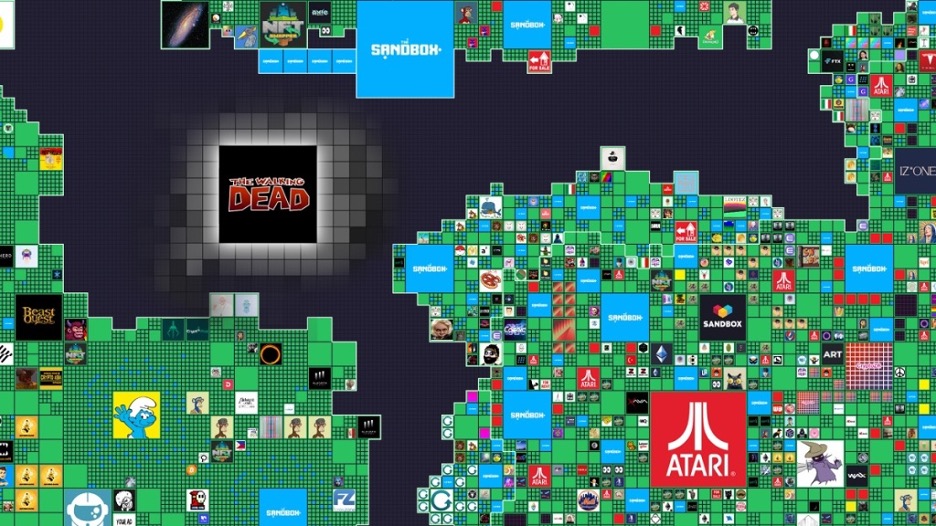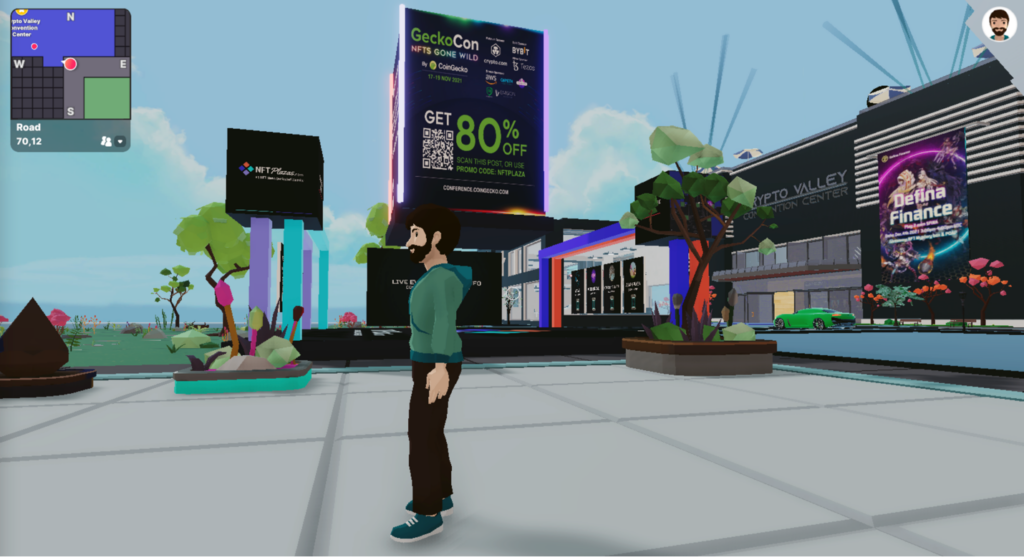The Foundation Of The Metaverse: Centralization Versus Decentralization
When you ask a regular person who pays attention to the news, “What is the metaverse?”, you can expect to hear something like, “It’s the project Facebook… I mean… Meta is now working on.”
What Is The Metaverse: Where We Are & Where We’re Headed >>
Indeed, when Facebook rebranded to Meta in October 2021 at the company’s annual Connect Conference, the multi-billion dollar social behemoth established itself—at least in the minds of many casual observers—as the leading architect of the metaverse, the next version of the internet that allows users to immerse themselves into real-time rendered 3D virtual worlds.
Meta’s metaverse is marching forward to the tune of $10 billion this year alone on its development. This would very likely stand on a much different foundation than the metaverse so many other players in this exciting space have been working on for years.
This clash of visions is yet another example of how vastly different the interests of major corporations and regular people who use their products and services can be.
New Internet, Same Centralized Problems
Regardless of the specific shape it will have, the concept of the metaverse will play an important role in the future. The entire metaverse industry is expected to grow at a compound annual growth rate of 13.1 percent over the next few years, and its growth will only keep accelerating as it becomes more accessible.
Epic Games CEO Tim Sweeney sees the metaverse as a potential “multi-trillion-dollar part of the world economy,” which, like the internet as we know it today (web 2.0), would not be owned by any specific corporation.
Currently, the buzz around the metaverse is, to a large extent, generated by some of the biggest tech players entering the space.
In addition to Meta…
- Microsoft is launching tools to create immersive spaces with augmented and virtual reality
- Apple is getting ready to launch its first virtual reality headset followed by their first AR focused wearable
- NVIDIA believes the metaverse will be a massive opportunity for the company’s hardware and software business
- Epic Games is making billions of dollars with Fortnite, a popular proto-metaverse where millions of players from around the world gather together in a virtual world to play games, chill, and attend concerts
- Disney, one of the world’s largest media and theme park operators, was awarded the patent in late December 2021 for a technology capable of tracking mobile devices to create personalized 3D projected overlays on physical spaces. This patent would allow the media giant to superimpose digital content on real-world environments, bypassing the need for virtual and augmented reality (VR/AR) head-mounted displays
Major corporations will play a huge role in the evolution of the metaverse, which leads to the following question: Will they introduce the same privacy and data protection problems that plague the current internet?
Take Meta, for example. The company’s business model revolves around user data. The company then uses the gathered data to allow third parties to show Facebook’s users targeted advertising, and it also shares the data directly with other technology firms, including Amazon, Apple, Microsoft, Netflix, and Yandex.
A Meta-controlled metaverse consisting of virtual reality experiences like Horizon Worlds, Venues, and Workrooms accessible via Meta’s Oculus Quest headsets would present an infinite number of opportunities to analyze all user activity, including what virtual content users interact with and for how long. Meta could then use the collected data to transform its metaverse for the benefit of advertisers and its business partners.
If user interaction data is stored in a centralized fashion, it would be difficult for independent third parties, let alone regular end-users, to verify exactly who has access to it and under what conditions. It’s not difficult to imagine another Cambridge Analytics-style data scandal, with a political party or a nation-state analyzing metaverse users to influence their real-world beliefs and actions.
Meet Decentralized Metaverses
Since 2008, the entire world has been witnessing the tremendous disruptive power of decentralization as blockchain-based cryptocurrencies like Bitcoin came to dominate financial news, providing alternatives to government-controlled fiat currencies.
Since then, countless applications of blockchain technology have emerged across virtually all sectors, all taking advantage of blockchain’s ability to store data securely and verifiably in a timestamped, immutable ledger within a decentralized database without the need for a “trusted” central authority.
Decentralized finance, or DeFi, is a system by which financial products become available on a public decentralized blockchain network. DeFi wallets like Metamask and Trust Wallet are open to anyone to use, rather than going through middlemen like banks or brokerages. Unlike a bank or brokerage account, a government-issued ID, Social Security number, or proof of address are not necessary to use a DeFi wallet, increasing its privacy and anonymity.
This revolutionary blockchain technology is helping address the privacy and data protection problems a centralized metaverse would inevitably be plagued with.
- Sean Stein Smith, Professor, City University of New York – Lehman College
Already, a host of decentralized metaverse projects are taking advantage of blockchain technology to deliver user-owned experiences that are resistant to censorship and interoperable with one another.
Perhaps the most prominent representative of the decentralized metaverse is Decentraland, a fully decentralized world on the Ethereum blockchain, controlled by a Decentralized Autonomous Organization (DAO) made up of individual players who can vote to change the policies that determine how the world behaves. Decentraland has its own cryptocurrency, MANA, and this cryptocurrency can be freely exchanged on cryptocurrency exchanges for other currencies.
Other representatives of the decentralized metaverse include The Sandbox and Somnium Space. Together with Decentraland, these virtual reality universes tokenize in-game assets and land parcels to give players the ultimate control over the world they inhabit and help create—the same control they enjoy over their real-world possessions.

The Sandbox map of land plots owned by individuals, collectives and corporations or brands like CryptoPunks, Snoop Dogg, Atari, Walking Dead, and Smurfs.
These decentralized universes of the metaverse are already seeing a land grab by individuals and corporations alike. Renting plots of land and virtual infrastructure is already underway like an AirBNB for the metaverse where individuals, corporations, artists, and more can rent virtual locations to host events in the metaverse. Digital billboards have already been seen for rent within these unique experiences as shown in the image below.

Digital billboard provided by NFTplazas in Decentraland around Crypto Valley.

Binance owned plot of land in Crypto Valley within Decentraland.
Meet Decentralized Metaverses
Even though the concept of the metaverse has been with us ever since Neal Stephenson released his dystopian cyberpunk novel Snow Crash in 1992, we’re still far away from its realization.
One can review the initial version of the internet (Web 1.0) and tie the overwhelming success to interoperable standards and open technologies that made what we enjoy today possible. Modern collectives like the Blueprints for the Open Metaverse, created by Crucible’s Ryan Gill, are a fantastic example of industry professionals beginning to establish interoperable standards to ensure the metaverse stays open and hopefully decentralized. Web 1.0 established technologies and standards are now taken for granted, such as TCP/IP, URLs, and HTTP, to name a few. Web 2.0 transitioned from a read-only internet to the User Generated Content (UCG) internet we know today with the democratization of content creation to publish various forms of content on the web. Web3 or Web 3.0 will need to have similar standards and protocols established like the initial version of the internet. Once these standards are established, Web 4.0 will be made possible.
At this point, it seems that the metaverse can be built on two different foundations:
– One that is centralized and controlled by large corporations such as Meta
or
– One that is decentralized and controlled by the people who will inhabit the metaverse in the future
One thing is for sure, the foundation for the next evolution of the internet, known as the metaverse, is already underway, and it will likely give birth to the next generation of technology giants and start-ups that disrupt established industries in ways no one can currently predict.






